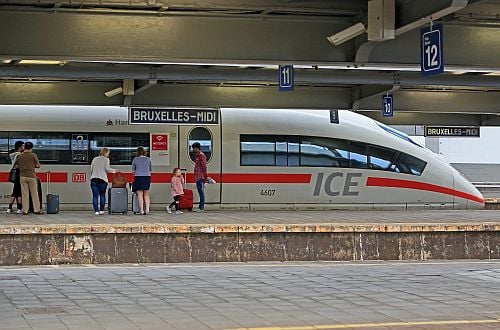In 2017, 1.1 million passenger travelled by ICE on the Frankfurt - Brussels route, while the number of passengers using the Frankfurt - Amsterdam ICE service reached a record 2.5 million. In addition, DB recorded a 10% increase in traffic last year on the Inter-City service linking Berlin, Hannover, Bad Bentheim and Amsterdam, despite a relatively long end-to-end journey time of 6h 22min.
DB increased the number of trains per day between Frankfurt and Brussels in 2016 from four to six round trips, and says in view of the growing demand, it plans to add a seventh train in 2019. DB competes with Thalys on the section between Cologne and Brussels, with Thalys operating five trains per day.
DB is the sole operator on the Amsterdam - Düsseldorf - Cologne - Frankfurt route and operates seven ICEs daily (six on Sundays), one of which extends south to Mannheim, Karlsruhe and Basle, Switzerland.
Calls for improvements
Meanwhile both the Dutch infrastructure manager Prorail and Netherlands Railways (NS) are calling for improvements in cross-border long-distance services, particularly higher speeds on the Dutch network.
The introduction of multi-system ICEs, currently used exclusively on Amsterdam - Frankfurt services, on the Amsterdam - Berlin route would eliminate the need for a locomotive change at the border station of Bad Bentheim.
This would also enable 250km/h running between Hannover and Berlin, compared with 200km/h for the current locomotive-hauled IC trains, and reducing the number on stops on this section could also strengthen rail’s competitive position on the Amsterdam - Berlin route.

